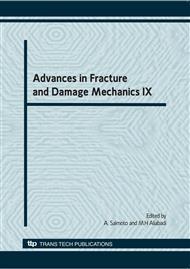p.441
p.445
p.449
p.453
p.457
p.461
p.465
p.469
p.473
Fracture Properties of PCBN as a Function of Loading Rate and Temperature
Abstract:
Polycrystalline Cubic Boron Nitride (PCBN) is a super-hard material used in some of the most demanding material removal operations today. These include turning of hardened steels, as well as the machining of highly abrasive alloys. In these applications the tools are subjected to high operating temperatures, abrasive and impact loading. This can lead to the brittle fracture of the tool. Accurate determination of the fracture toughness and mechanical properties of PCBN under a wide range of operating conditions is therefore essential in order to evaluate the performance of the tool under these highly demanding conditions. For this study, a laboratory scale three point bend test rig has been used for the fracture tests. The fracture toughness of two different grades of PCBN are measured at a range of loading rates and temperatures corresponding to the actual in-service conditions. The results show the measured properties of these materials vary with both loading rate and temperature. The fracture surfaces of the specimens are examined using scanning electron microscopy to determine dominant fracture mechanisms.
Info:
Periodical:
Pages:
457-460
Citation:
Online since:
November 2010
Authors:
Price:
Сopyright:
© 2011 Trans Tech Publications Ltd. All Rights Reserved
Share:
Citation:


